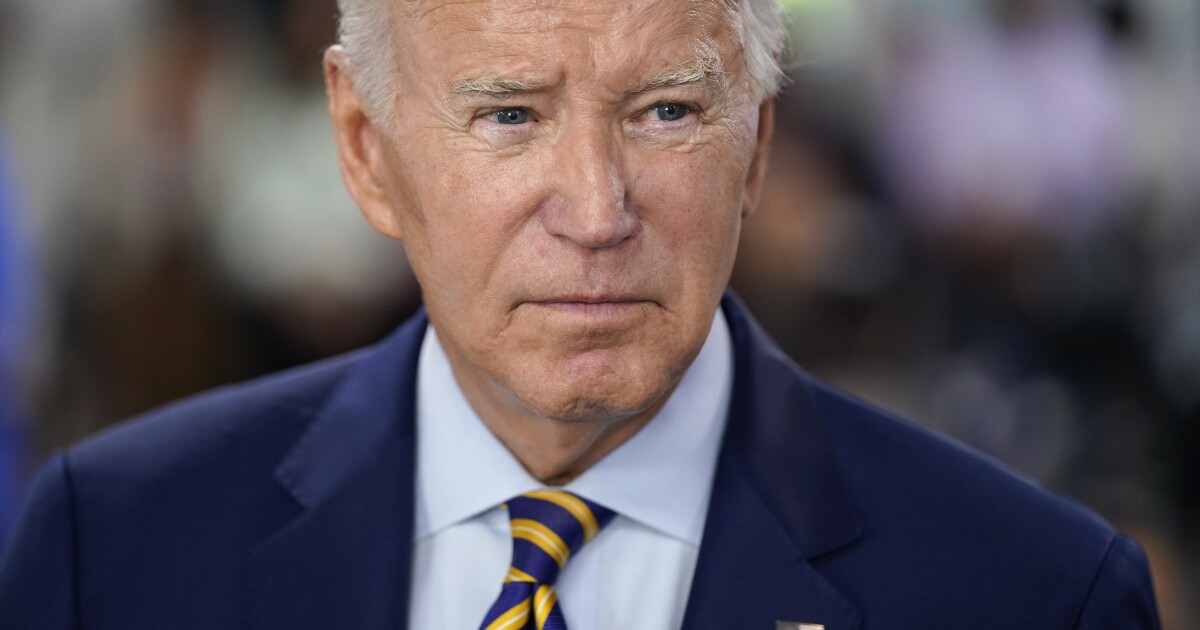

Conservatives are keeping up pressure on the Biden administration to scrap remote work for thousands of federal employees.
Lawmakers have been calling on the White House to get the federal workforce back in the office for most of this year. While the effort is led mostly by Republicans, local elected officials from the Washington, D.C., area are on board as well.
BIDEN’S GERMANY AMBASSADOR AGAIN RAISES EYEBROWS WITH MEGA PAYOUTS FROM PENN
“The American people deserve to understand the Biden administration’s post-pandemic telework policy and the thinking behind the Biden Administration’s rapidly evolving telework posture,” an Aug. 31 letter from the House Oversight Committee to White House chief of staff Jeff Zients reads.
Oversight Committee Chairman James Comer (R-KY) introduced the Stopping Home Office Work’s Unproductive Problems, or SHOW UP, Act in Congress back in January and has been on a crusade ever since.
The act would send the federal workforce back to the office within 30 days of passage and then require agencies to submit studies addressing how telework affected their mission, with no permanent remote positions allowed until formal “telework plans” have been approved.
The House of Representatives passed the SHOW UP Act in February, and a group of senators led by Sen. Marsha Blackburn (R-TN) introduced a companion bill in May. But the legislation has gone nowhere in the Democratic-controlled Senate.
President Joe Biden has made noises toward getting federal workers back into office buildings. He signed a bipartisan congressional resolution to end the national COVID-19 pandemic emergency in April, and the White House said the same month it was directing agencies to “substantially increase in-person presence” among employees.
It’s been a slow process, however, prompting the Oversight Committee’s latest letter.
It asked for data and details on telework policies at 25 government agencies on May 18, which the committee says went largely ignored until it sent a follow-up on Aug. 4. The same day, Zients issued guidance calling for employees to “aggressively” shift back to work this fall, and the committee wants to know why.
“By suggesting that in-person work would lead to improved outcomes, your email implies that the Biden administration’s widespread use of post-pandemic federal telework has resulted in reduced productivity, diminished customer service, and worse overall returns for the American taxpayer,” the letter reads. “With the worst effects of the COVID-19 pandemic long behind us, the timing and motivation of the Administration’s sudden push for increased in-person work calls for a more formal explanation.”
The White House did not respond to questions from the Washington Examiner.
Republicans have raised concerns about specific services that may be affected by remote work, citing passport processing backlogs and delays inside the Veterans Affairs Department.
Last year, a VA employee attracted headlines when he bragged about working from a bubble bath.
A July report from the Government Accountability Office found that around two dozen federal agencies used between 39% and 49% of their headquarters, and the overall utilization rates across the agencies’ headquarters varied from about 10% to 50%.
One potential reason for the White House’s slow response is labor unions, which are a crucial constituency for Biden and generally champion remote work.
For example, the National Archives reached an agreement in December with the American Federation of Government Employees in which all full-time positions would be eligible for remote work.
Telework could even become a campaign issue. Former Vice President Mike Pence has promised to bring workers back as part of his “Day 1” plan as president.
But GOPers have found an unlikely ally in their quest to get federal workers back in the office — local governments. Washington, D.C., Mayor Muriel Bowser has called for federal employees to either return to the office or give up the real estate for new housing. In Bowser’s case, the idea is more centered on the economic impact remote work is having and her long-standing affordable housing push, but the pleas still ratchet up pressure on Biden to address the situation.
A council representing 23 local governments weighed in this week with its own letter to the Office of Management and Budget urging more in-person work.
“We employ roughly 100,000 outstanding individuals, and the large majority of our employees work in-person on a full-time basis,” the letter reads. “For those who are eligible to telework, employees typically report to work in-person two to three days a week. We have found that this strikes an appropriate balance and provides the best level of service for taxpayers.”
CLICK HERE TO READ MORE FROM THE WASHINGTON EXAMINER
The House Oversight Committee made several requests of Zients, including what prompted his call for returning to the office and whether the White House was aware of diminished performance from remote employees.
The Oversight Committee is planning to hold a hearing about federal remote work on Sept. 14.





